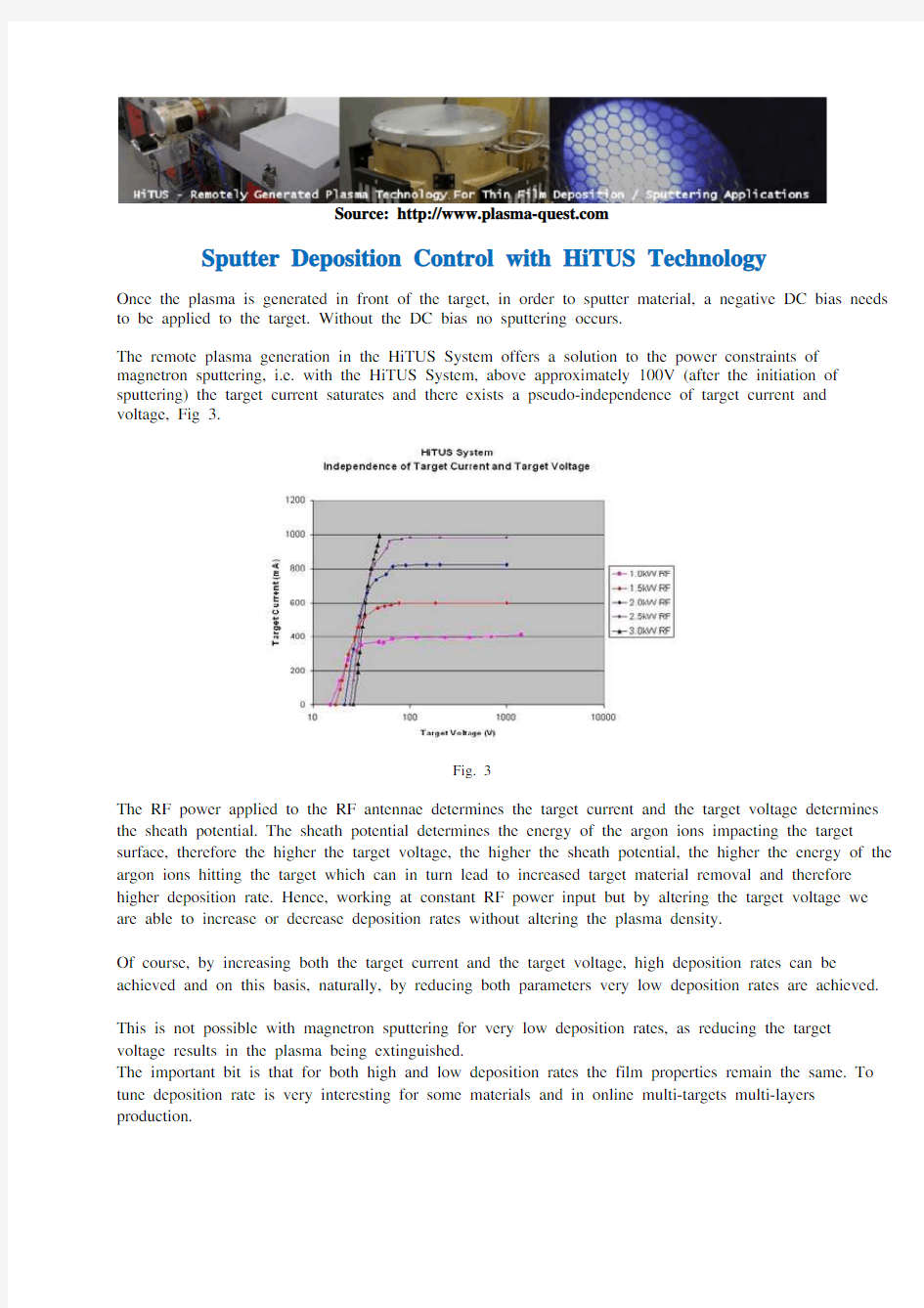sputterdepositioncontrolwithhitus

Source: https://www.360docs.net/doc/b64018386.html,
Sputter Deposition Control with HiTUS Technology
Once the plasma is generated in front of the target, in order to sputter material, a negative DC bias needs to be applied to the target. Without the DC bias no sputtering occurs.
The remote plasma generation in the HiTUS System offers a solution to the power constraints of magnetron sputtering, i.e. with the HiTUS System, above approximately 100V (after the initiation of sputtering) the target current saturates and there exists a pseudo-independence of target current and voltage, Fig 3.
Fig. 3
The RF power applied to the RF antennae determines the target current and the target voltage determines the sheath potential. The sheath potential determines the energy of the argon ions impacting the target surface, therefore the higher the target voltage, the higher the sheath potential, the higher the energy of the argon ions hitting the target which can in turn lead to increased target material removal and therefore higher deposition rate. Hence, working at constant RF power input but by altering the target voltage we are able to increase or decrease deposition rates without altering the plasma density.
Of course, by increasing both the target current and the target voltage, high deposition rates can be achieved and on this basis, naturally, by reducing both parameters very low deposition rates are achieved. This is not possible with magnetron sputtering for very low deposition rates, as reducing the target voltage results in the plasma being extinguished.
The important bit is that for both high and low deposition rates the film properties remain the same. To tune deposition rate is very interesting for some materials and in online multi-targets multi-layers production.
